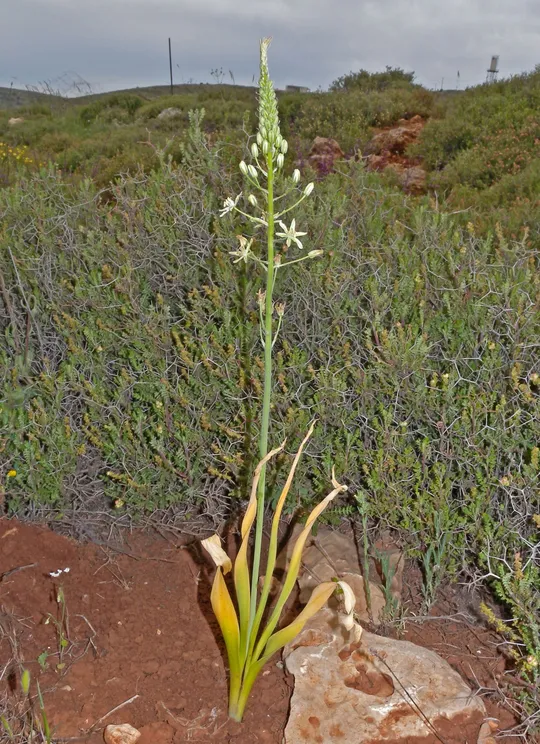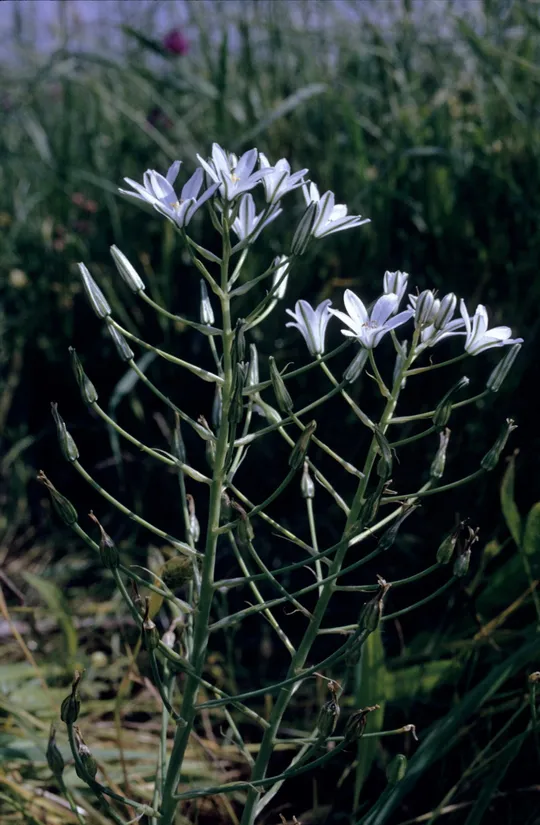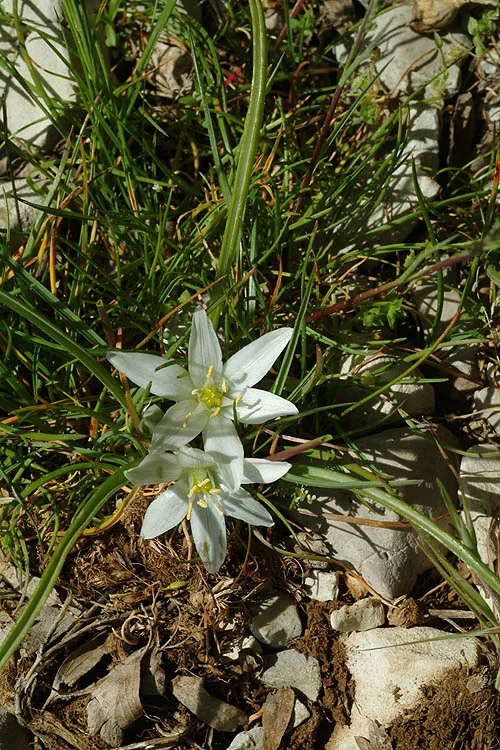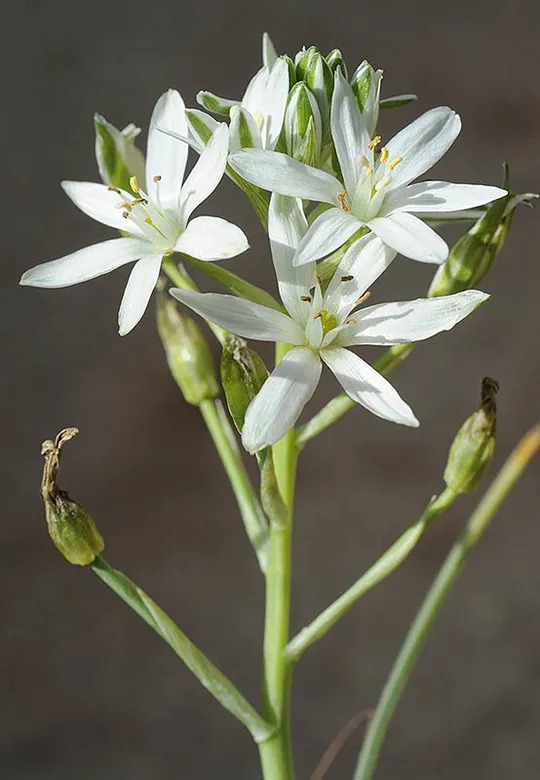Ornithogalum herodianus
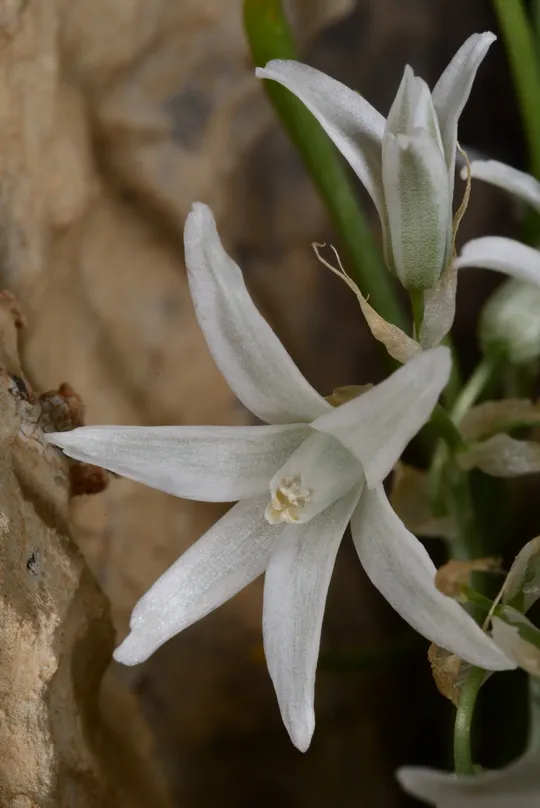
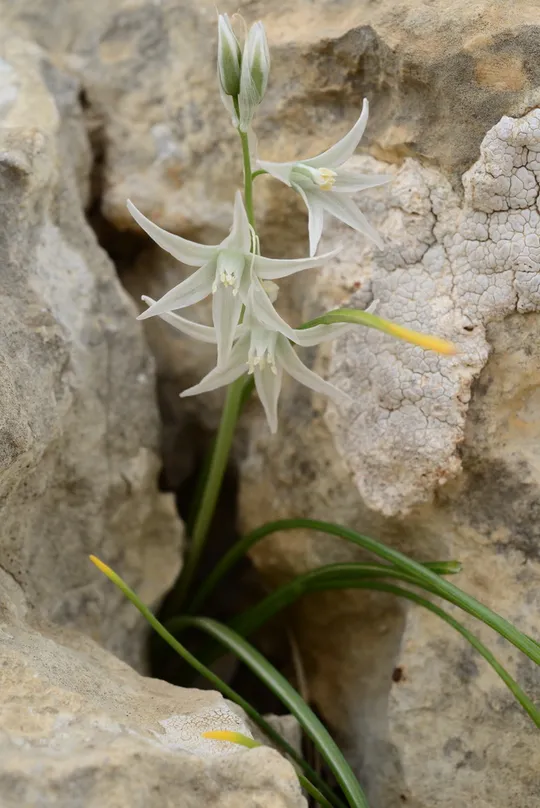
Ornithogalum sp. nova was found in the Judean Desert
in 1987, at a single site in Wadi Tko'a, about 2 km southeast of the Herodium
and north of Tko'a. Two close populations were found on both sides of the
canyon. No additional populations were found along the canyon cliffs in similar
growth conditions.
Rock crevices, fractured limestone cliffs and angular ledges
in the Judean Mountains transition zone canyons descending to the Dead Sea. Usually
found on steep northern slopes, but also on rocky slopes and along the main
flow channel of Wadi Tko'a. Ornithogalum sp. nova is not found on rock expanses,
on vertical cliffs and in the canyon channel bed.
For the genus –
see Ornithogalum fuscescens.
The section to
which the Ornithogalum sp. nova
belongs has only two species in Europe.O. nutans belongs to the Eastern Mediterranean element: it
grows wild in Greece, Bulgaria and South Western Turkey, (and is common in
gardens across Europe where it occasionally becomes feral), and O.
boucheanum, that is very close to Ornithogalum
sp. nova and grows in
Eastern Europe down to the Crimean Peninsula. These species have many bulbils,
leaves with a white stripe at the center, drooping flowers and perianth lobes
that arch outwards. Another important sign are wing-like membranes on both
sides of the dentate filament. These signs are characteristic of a special
group in the genus, subgenus Myogalum (Link) Baker. These marks do not appear
in other Ornithogalum species of Israel and the Levant. The Tko'a
population is unique in having small and few plant organs, very narrow leaves, a
one-sided inflorescence and a lack of serrations on the stamen filament wings.
Comparison of the species description in various Floras and studies shows that
except for the narrow leaves, the rest of the special features found in the Tko'a
population were also found in the Turkish and European populations. Thus, it is
still not clear whether the Wadi Tko'a taxon is a new species to science or a
strain of the European species.
·
Ornithogalum sp. nova is found at only
one site.
·
The area that the population occupies
is very small and spans only about 1600 square meters. In 2009, 810 clumps were
counted (650 on the northern slope and the rest at the edge of the streambed
and on the southern cliff).
·
Porcupine activity threatens Ornithogalum sp. nova population:
they probably dig out all the bulbils from the slope. Only rock pockets show no
signs of porcupine excavations and this is probably how some of the bulbils survived.
·
Ornithogalum sp. nova is located within
the boundaries of the Wadi Tko'a Nature Reserve.
·
The extended taxon is widespread in
Europe, sometimes as a feral plant and it is not endangered. However, if Ornithogalum sp. nova is a new
endemic species to science, distinct from the European species, then the local threat
is also a global one.
The population
size and its annual fluctuations should be carefully monitored. Other
populations should be looked for in the Tko'a Canyon and in nearby ravines. The
taxonomic status of the species should be clarified in order to establish its identification
as separate and endemic species.
Ornithogalum sp. nova is an endemic
species or subspecies.
Ornithogalum sp. nova is a
geophyte that grows at a single site in the Wadi Tko'a canyon in the Judean
Desert. The area that it occupies is very small and its bulbils are in danger
of being uprooted and eaten by porcupines. Its red status is contingent on the
final clarification of its status as a separate endemic species to Israel.
ראה רשימת הספרות הכללית.
Current Occupancy Map
| 1000 squre meter pixel | 5000 squre meter pixel | 10000 squre meter pixel | |
|---|---|---|---|
| number of observations | 0 | 0 | 0 |
| in total pixels | 0 | 0 | 0 |
| Family | Liliaceae |
| Classification | On the endangered species list |
| Ecosystem | Semi Steppe Belt |
| Chorotype | Eastern Mediterranean |
| Conservation Site | Wadi Tko'a Cliffs |
| Rarity |
1
6
6
|
|---|---|
| Vulnerability |
0
0
4
|
| Attractiveness |
0
1
4
|
| Endemism |
0
4
4
|
| Red number |
1
6.3
10
|
| Peripherality | 0 |
| IUCN category | DD EW EX LC CR EN VU NT |
| Threat Definition according to the red book | Critically endangered |
 Based on:
Based on:
